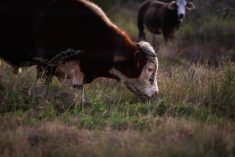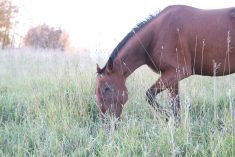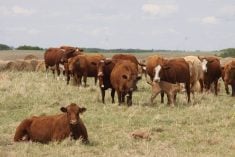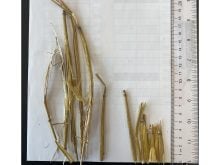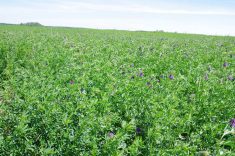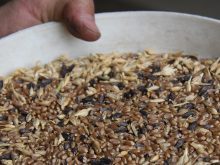Livestock feed costs are increasing as feed supplies run short. That makes feed testing even more important, said Bree Kelln, assistant professor at the University of Saskatchewan.
Feed costs can quickly add up, particularly when winter feeding periods can last for up to 200 days, often in rough weather conditions, said Kelln, during a recent webinar hosted by the Beef Cattle Research Council.
In Saskatchewan, alfalfa and grass hay prices have nearly doubled, while straw costs have increased even more since 2020. Feed costs per cow have increased across Western Canada.
Read Also

Trump’s tariffs take their toll on U.S. producers
U.S. farmers say Trump’s tariffs have been devastating for growers in that country.
“We’re close to 70 percent of production going into winter and summer feeding. So, what you feed and how you feed it are the biggest costs for the cow herd,” said Kelln.
Testing stored forages, grains and pellets, as well as pastures during summer and the water used for rations, all contribute to squeezing efficiencies out of costs, while ensuring quality.
Anytime is a good time for testing, said Kelln.
“With something like a silage or something that is a bit wetter — wet grains or silages — they can be vacuum-sealed in a food preserver and then just throw them in your freezer and the next time you have a chance to send them off for analysis, they’re ready to go.”
Getting silages tested before feeding enables producers to get a fermentation profile to garner data on how well the feed is being stored.
“While you won’t be able to do anything with it now, it’ll allow you to take a look at your practices in terms of how you put that feed up and then possibly make some changes for the following year,” said Kelln.
Online calculators can help feed buyers and sellers figure out the nutritional value and the appropriate price for feed, she added.
When it comes to herd health, feed testing is important to ensure nitrates, mycotoxins and sulphates aren’t contaminating the feed. Testing can also track down other issues that affect production, she said.
As for how to sample, it must be representative of the overall quality of the silage pile or pasture.
Kelln said it’s important to ensure samples are taken from the core, mixed well and stored properly before testing by vacuum sealing it and placing it in the freezer until sent.
“With bales, ideally we’d like to take 15 or 20 cores or bales per field and with silage, you’re probably going to want to take three to five cores,” said Kelln.
Once producers have the results, they can develop ration balancing programs. There are online programs, provincial government officials and nutritionists, and feed company consultants who can help, she said.
“There’s lots of nutritionists, feed companies and industry specialists that I’m sure will be happy to work with you and put a ration together for you if you are dealing with multiple feeds or feeds that you are not used to feeding or you haven’t fed before,” said Kelln.
Different cows have different nutritional requirements and there is value in targeting feed differently depending on the needs of a calf herd versus replacement heifers, as an example, said Kelln.
“That’s where it really becomes more in-depth, more challenging when we start to look at blending feeds. That’s where there is economics to that and there are ways to kind of save some dollars, if we’re able to blend low-quality feed with some high-quality feeds,” she said.
One issue that has come up in the last two years because of dry conditions is the need to better understand the dry matter intake percentages of differing forages, said Kelln.
Because of the drought and feed scarcity in some areas, many producers used feed they were not accustomed to using last year. When they do so, they must ensure cows are receiving an adequate amount of dry matter.
“As you are feeding those animals, their intakes may change,” Kelln said. “You may be feeding them one week and then the next week you’re thinking, ‘well jeepers, they aren’t eating as much (as) the week before,’ and it could be that the dry matter has changed slightly on that feed.”
Every year is different and one reason to test feed is to be proactive. To do that, producers must spot changes early and respond accordingly, said Kelln.
“With the drought, there have been producers that were harvesting anything and everything that they could get their hands on,” she said. “It really was a matter of just making sure we had proper feed tests on them and creating blends they could work with.”
Kelln said a western Canadian online survey is being launched by the University of Saskatchewan on feed testing and ration balancing this winter.




